

Nara is an ancient capital city where rich history and nature are in harmony, and where you will discover something new every time you visit. The magnificent architecture and Buddhist statues of Todaiji Temple and Kofukuji Temple will overwhelm you, and you can enjoy interacting with the deer in Nara Park. In addition, the spectacular view of Nara City from Mt. Wakakusa and a stroll in the town of Naramachi will soothe your soul.

In conclusion, 10 Unique Things to Do in Nara are as follows.
- Tour of Todaiji Temple
- Visiting Kasuga Taisha Shrine
- Feeding the deer in Nara Park
- Visiting Kofukuji Temple
- Strolling in Naramachi
- Visiting Yakujiji Temple
- Touch the oldest wooden structure at Horyuji Temple
- Panoramic view of Nara City at Wakakusa-yama
- Eating Kakinoha Sushi
- Eating Kuzu Mochi

Based on this experience, we would like to tell you about 10 Unique Things to Do in Nara!
This article will help you know what to do in Nara.
Tour of Todaiji Temple

Todaiji Temple is one of Nara's most famous tourist attractions, especially the Daibutsuden (Great Buddha Hall), which is world famous. Built in the Nara period (710-794), the Daibutsuden attracts many tourists with its huge scale and beautiful form.

Among them, the Great Buddha of Todaiji Temple (Rushanabutsu) stands approximately 15 meters tall and is overwhelming in its majestic appearance. Inside the Great Buddha Hall, the traditional experience of “nose-gouging” through the huge wooden pillars is also popular.
- Location: 406-1 Zoshi-cho, Nara-shi, Nara 630-8587, Japan
- Open hours: Daibutsuden 7:30-17:30 (April - October)/8:00-17:00(November - March)
- Price: 800yen
- HP:https://www.todaiji.or.jp/en/information/haikan/
Nara sightseeing tours are also recommended.
Visiting Kasuga Taisha Shrine

Kasuga Taisha Shrine is a shrine filled with Nara's traditions and history, and is the head shrine of approximately 1,000 Kasuga shrines throughout Japan. When visiting here, it is important to observe basic manners. It is considered a good idea to bow lightly before passing through the torii gate and to avoid the middle of the path on the approach to the shrine. The two-beat, one-clap worship at the shrine is the official manner of worship at shrines.
The grounds of the shrine are home to a gorgeous vermilion-lacquered shrine pavilion, which has been famous for its wisteria since ancient times. The Kasuga Taisha National Treasure Hall, which houses 354 national treasures and 2505 important cultural properties, is also located within the grounds.
- Location: 160 Kasugano-cho, Nara City, Nara Prefecture, 630-8212, Japan
- Open hours: March-October 6:30-17:30/Nov-Feb 7:00-17:00
- Price: Omotosha (Omiya) Prayer Hall:free
- HP: https://www.kasugataisha.or.jp/
Feeding the deer in Nara Park
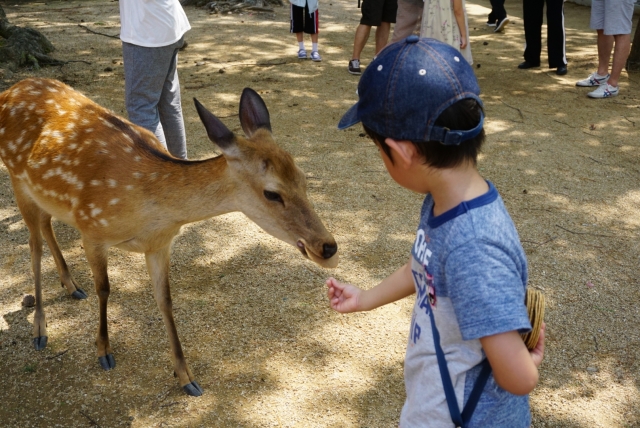
One of the most enjoyable things to do in Nara Park is to interact with the deer. Especially when you hold a “shika senbei” (deer cracker) in your hand, many deer will gather around, but you can enjoy it more if you know how to give it to them well. The first point is to avoid showing the deer crackers too much and to hand them to the deer little by little. Also, the deer may bow their heads in a gesture of greeting, so it is a good idea to capture the moment in your photo.
Nara Park is dotted with elegant sightseeing spots such as Ukimido and Yoshijo-en, as well as Todaiji Temple and Kasuga Taisha Shrine. Ukimido, in particular, is a beautiful structure standing in a pond, and on a clear day, its reflection on the water is a spectacular sight. Visitors can also enjoy interacting with deer while relaxing in the natural surroundings of Nara Park.
Visiting Kofukuji Temple
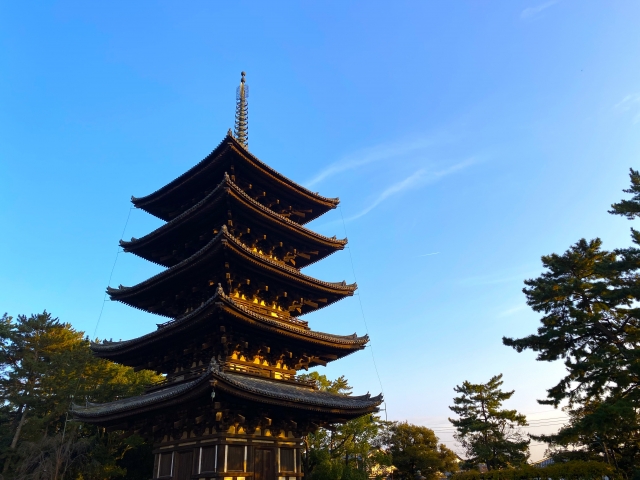
The five-story pagoda of Kofukuji Temple is a symbol of Nara and is one of the tallest wooden structures in Japan at 45 meters. The five-story pagoda was built in the Nara period (710-794) and was rebuilt after several fires. Its grandiose appearance blends harmoniously with the surrounding landscape, yet it exudes an overwhelming sense of presence that attracts visitors.
Kohfukuji Temple has the largest collection of national treasure sculptures in Japan, many of which are stored and exhibited in the National Treasure Museum. In addition to the eight statues including “Ashura” lined up on the stage-like Shumidan, “Butsutou” created in the Hakuho period and “Standing Thousand-Armed Kannon” over 5 meters high are must-sees.
- Location: 48 Todaiji-cho, Nara City, Nara Prefecture 630-8213
- Open hours:9:00~17:00(Payment ends at 16:45)
- Price: 700yen
- HP: https://www.kohfukuji.com/english/
Strolling in Naramachi
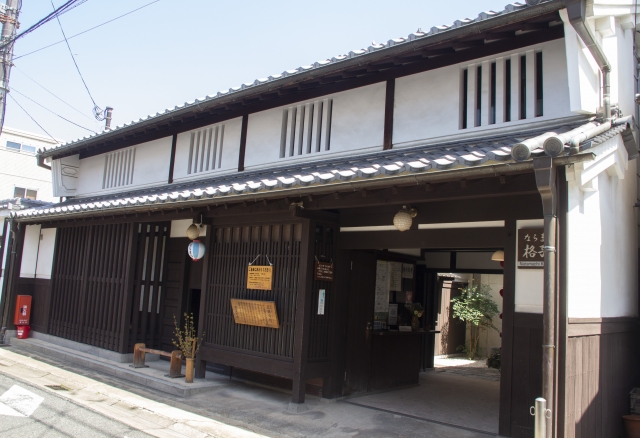
Naramachi is an area that still retains the streets of the Edo period, and is a spot where visitors can stroll and enjoy the historical atmosphere of the area. Old wooden townhouses and storehouses are scattered throughout the town, which is made up of a series of narrow alleys, and they remind visitors of the lifestyle of the Edo period. There is also the “Naramachi Lattice House” open to tourists, where visitors can directly experience the lifestyle of Nara's machiya houses.
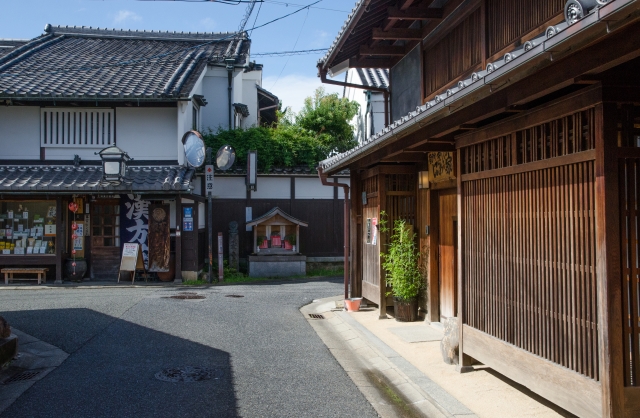
Naramachi is dotted with fashionable cafes and handmade goods stores that blend in with the traditional scenery. Cafes offering dishes and sweets made with locally produced ingredients are especially popular, and are a perfect place to relax after a long day of travel. Also recommended are crafts with deer motifs and traditional Japanese sweets as souvenirs that are uniquely Nara.
Visiting Yakujiji Temple
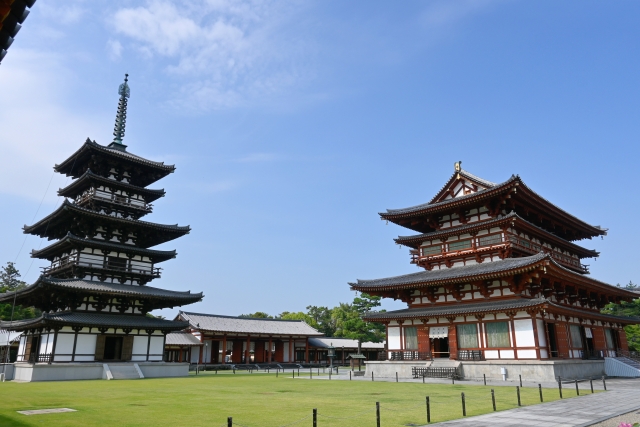
Yakushiji Temple is a Buddhist temple that retains vestiges of the Nara Period and is particularly famous for its three-story pagodas on the east and west sides. This temple complex has a beautiful symmetrical structure and is highly valued for its artistic value. The main statue of Yakushi Nyorai, which is believed to be beneficial for healing illness, attracts many worshippers.
In 1998, Yakushiji Temple, the head temple of the Hosso sect of Buddhism, was registered as a UNESCO World Heritage site as one of the components of “Cultural Properties of Ancient Nara.
- Location: 457 Nishinokyo-machi, Nara 630-8563, Japan
- Open hours:9:00 - 17:00 (admission until 16:30)
- Price: 1,000yen
- HP: https://narashikanko.or.jp/en/spot/world_heritage/yakushiji/
Touch the oldest wooden structure at Horyuji Temple
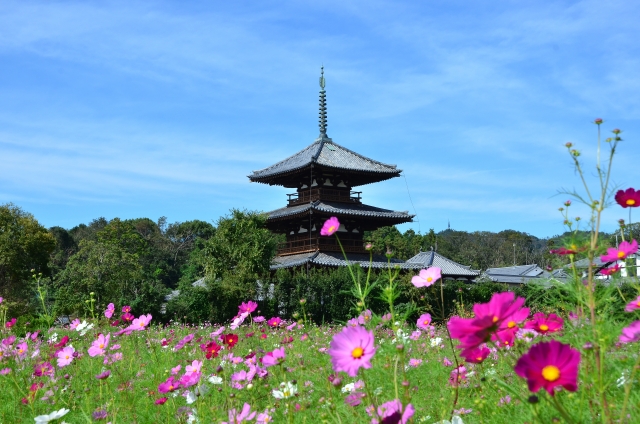
Horyuji Temple is one of the oldest wooden structures in the world and is registered as a World Heritage Site, and is an important part of the Japanese cultural heritage. In particular, the “five-story pagoda” and “Kondo” are highly regarded both architecturally and historically. These buildings were constructed in the 7th century and still retain much of their original form. Visitors can see the origins of Japanese Buddhist architecture and feel the splendor of ancient technology.
Horyuji Temple was an important temple in the early days of Japanese Buddhism and was founded by Prince Shotoku. In particular, Horyuji served as the center of the “Hosso sect” in the history of Japanese Buddhism, where many monks studied. In addition, the sculptures and Buddhist statues that remain at Horyu-ji represent the pinnacle of Japanese Buddhist art and are of great historical value.
- Location: 1, 1 Horyuji Sannai, Ikaruga-cho, Ikoma-gun, Nara, 636-0115, Japan
- Open hours: M8:00 a.m. - 5:00 p.m. 2/22 - 11/3・8:00 a.m. - 4:30 p.m. 11/4 - 2/21
- Price: 1,500yen
- HP: https://www.horyuji.or.jp/en/
Panoramic view of Nara City at Wakakusa-yama
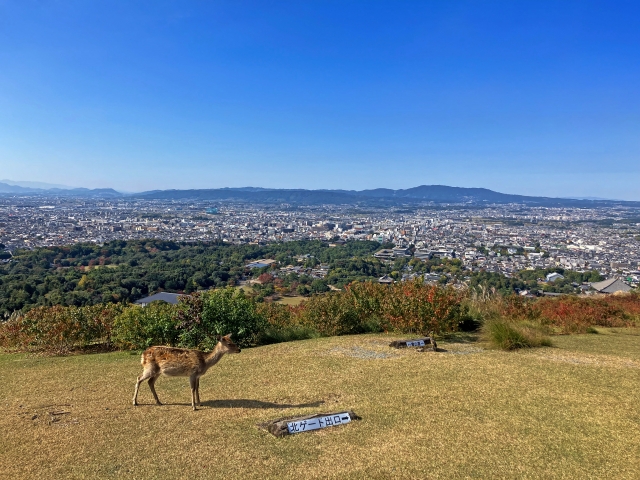
Wakakusa-yama is an excellent vantage point from which to view the city of Nara, and is easy to climb even for beginners. In spring and fall, the mountain is crowded with hikers, and from the summit you can enjoy a panoramic view of Nara City and the mountains in the distance. Especially during the cherry blossom season and the season of autumn leaves, the entire mountain is dyed in beautiful colors, a moment when you can feel the beauty of nature.
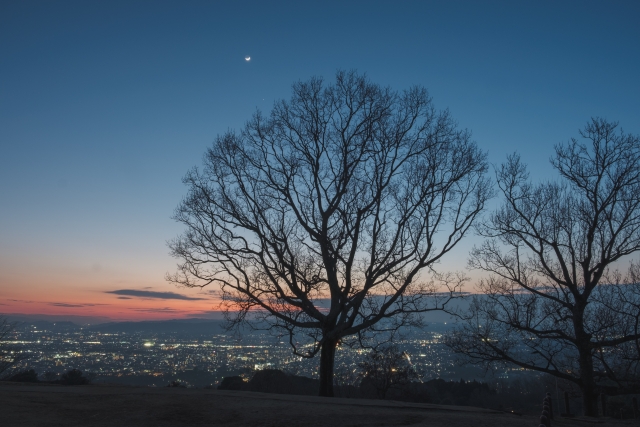
Another attraction of Mt. Wakakusa is the night view. The view of Nara City at night from the top of the mountain is as brilliant as if it were sprinkled with jewels. Especially on summer nights, you can enjoy the night view while feeling the cool breeze and having a romantic moment.
Eating Kakinoha Sushi

(Source: Ministry of Agriculture, Forestry and Fisheries Web site(https://www.maff.go.jp/j/keikaku/syokubunka/k_ryouri/search_menu/menu/kakinoha_zushi_nara.html))
Kakinoha sushi is pressed sushi made of salted mackerel wrapped in kakinoha (persimmon leaves) with vinegared rice.
Since the time when Nara was the capital of Japan and there was no sea, it was the “long-cherished wish” of the people of the capital to eat marine products. So, people devised various ways to bring seafood all the way from the distant sea, so that even Nara, which has no sea, could enjoy tasty seafood.
By using persimmon leaves, which have excellent antibacterial and antioxidant properties and are said to not only keep sushi rice from drying out but also enhance its preservation, the people of Nara created kakinoha sushi, a type of sushi that can be preserved and served as a “feast” during festivals.
Eating Kuzu Mochi
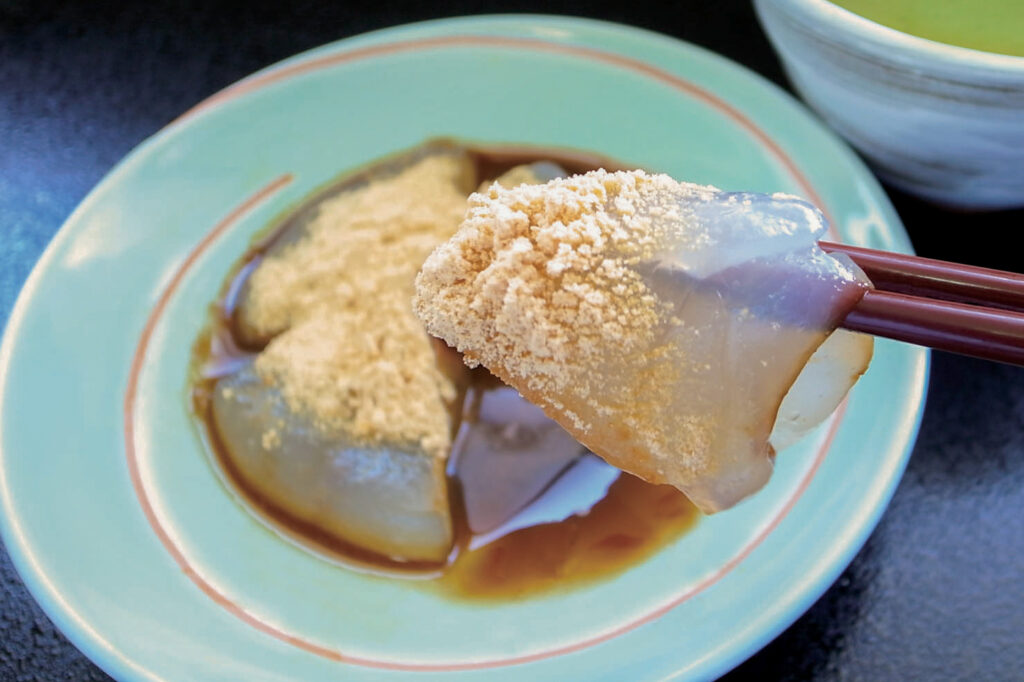
(Source: Ministry of Agriculture, Forestry and Fisheries Web site(https://www.maff.go.jp/j/keikaku/syokubunka/k_ryouri/search_menu/menu/kuzu_mochi_nara.html))
Kuzu mochi” is a clear, pull-apart rice cake made from kuzu flour that has a pleasant texture.
Kuzu powder” is a natural food made by repeatedly refining the starch contained in kuzu root using only groundwater in midwinter and drying it for two to three months, and contains no additives. Thus, kuzu flour made from 100% kuzu starch is called “Yoshino-honkuzu. The process of exposing the kuzu to cold water several times during the severe winter is called the Yoshino zarashi method, a traditional method that has been used since the Edo period. The cold weather and high-quality water in the Yoshino region of Nara Prefecture produce high-quality kuzu flour.
Kuzu flour is widely used for cooking and sweets such as sesame tofu, kuzu yu, kuzu manju, kuzu kiri, and thickening of dishes, in addition to “kuzu mochi” (kuzu rice cakes).
Summary
In this article, we have told you about 10 Unique Things to Do in Nara.
10 Unique Things to Do in Nara are as follows.
- Tour of Todaiji Temple
- Visiting Kasuga Taisha Shrine
- Feeding the deer in Nara Park
- Visiting Kofukuji Temple
- Strolling in Naramachi
- Visiting Yakujiji Temple
- Touch the oldest wooden structure at Horyuji Temple
- Panoramic view of Nara City at Wakakusa-yama
- Eating Kakinoha Sushi
- Eating Kuzu Mochi
Have a wonderful time in Nara!
CHECK
-

-
[Review]JW Marriott Hotel Nara. Deluxe Room Accommodations with Children.
RebeccaAre you wondering what the JW Marriott Hotel Nara, the first JW Marriott brand hotel in Japan ...
続きを見る